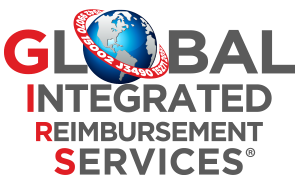To prevent the shortages that were a result of the COVID-19 pandemic, on February 24, 2021, President Biden signed Executive Order (E.O.) 14017, “America’s Supply Chains,” in which he directed the U.S. government to review the key U.S. supply chains to identify weaknesses so that to promote the strength of the supply chain could be developed. The proverb that was quoted by the President when signing the order was: “For want of a nail, the shoe was lost. For want of a shoe, the horse was lost.
The special taskforce that conducted the research focused on several key areas but for Pharmaceuticals and active pharmaceutical ingredients (APIs), the COVID-19 pandemic highlighted the critical importance of a self-sufficient U.S. based supply chain. Due to the work by both government and the private sector, in less than a year the United States the capacity to develop vaccines was dramatically increased.
However, shortages of critical generic drugs and APIs have plagued the United States for years due to a lack of interest in investing in less profitable drugs and other factors. To compound these challenges, 87 percent of generic API are manufactured overseas including China and India which although has reduced costs of production in the past decade has resulted in overdependence on outside sources and vulnerable to shortages of essential medicines. The report encourages a revamping of the supply chain to ensure that Americans have reliable access to the life-saving medicines.
The report recommends investing in the development of new pharmaceutical manufacturing and processes:
- To increase funding by the Department of Health and Human Services (DHHS), the Department of Defense (DOD), and other agencies to support advanced manufacturing technologies for continuous manufacturing and the biomanufacturing of APIs.
- To target American Rescue Plan funds to raise the production of key pharmaceuticals and ingredients, including using both traditional manufacturing techniques and accelerating on-demand manufacturing capabilities for supportive care fluids, API and finished dosage form drugs in modular, highly portable platforms.
On June 8, 2021, HHS, Office of the Assistant Secretary for Preparedness and Response (ASPR) and the U.S. Food and Drug Administration (FDA) released a series of policy recommendations to strengthen U.S. pharmaceutical supply and these recommendations have been accepted by President Biden. They include:
- Boosting local production and fostering international cooperation;
- Promoting research and development that establishes innovative manufacturing processes and production technologies to strengthen supply chain resilience;
- Creating robust quality management maturity to ensure consistent and reliable drug manufacturing and quality performance, and;
- Leveraging data to improve supply chain resilience.
Achieving success will require collaboration between multiple U.S. government agencies and the private sector to ensure patient access to pharmaceuticals. Successful implementation of the recommendations will also promote economic well-being of the country.
HHS states that it will work with the private sector and Congress to implement the recommendations and develop a strategy to facilitate adoption of novel methods for commercial production of pharmaceuticals and biologics.
If you are planning on producing a new drug, there are five key consideration that will be important to consider:
- Track the implementation of the policies to promote drug production to determine if there are opportunities to support your efforts. GIRS is tracking the initiatives to implement the policies to promote production of drugs in the U.S.
- Develop FDA strategies that will have positive reimbursement outcomes.
- Conduct a Reimbursement Landscape Assessment to determine the opportunities and obstacles in the Key Payer Markets for your drug.
- Develop clinical studies that include payer – desired data and develop a Value Proposition.
- Conduct Payer Advocacy and provider and other stakeholder education and support initiatives so that there is pull through in your strategies.
The GIRS Technical Expert Panel (TEP) of insurer decision makers assist our clients to introduce new drugs or other Products by providing input on payer desired criteria for coverage and payment. The GIRS Payer Advocacy Compass PAC team also educates payers about the Value Proposition of drugs and other Products and helps develop short term coverage and payment solutions as the payers wait for longer term studies to be completed. Also review our new e-book that provides a proven framework for coverage and payment if you have a drug or other Product that is facing market access challenges.
The GIRS Payer Advocacy Compass PAC® team has over 17 years of experience tracking payer market trends and policies and educating providers and stakeholders about changes to ensure coverage and reimbursement of our clients’ medical technologies.
Please contact us by email or avail or avail of our Complimentary Review of your reimbursement needs at girsinc.com
Sources:
Primary Source: https://www.hhs.gov/about/news/2021/06/08/biden-administration-recommends-policy-changes-secure-us-pharmaceutical-supply-chain.html
Primary Source: https://www.whitehouse.gov/wp-content/uploads/2021/06/100-day-supply-chain-review-report.pdf
https://www.fda.gov/media/143406/download
The GIRS Payer Advocacy Compass PAC® team has over 17 years of experience tracking payer market trends and policies and educating providers and stakeholders about changes to ensure coverage and reimbursement of our clients’ medical technologies.
Please contact us by email or avail or avail of our Complimentary Review of your reimbursement needs at girsinc.com
About GIRS
For more than 17 years, GIRS has been assisting medical technology manufacturers with their market uptake and reimbursement strategies so that patients can have access to the care that they need. To implement successful market access strategies, the GIRS Value Discovery Landscape Assessments® team and the Payer Advocacy Compass® team work together to develop and implement foundation reimbursement landscape and payer advocacy strategies to obtain positive coverage, appropriate payment, and innovative payer contracting arrangements to improve market uptake. For more information, email us at info@girsinc.com or call us at 901-834-9119.

